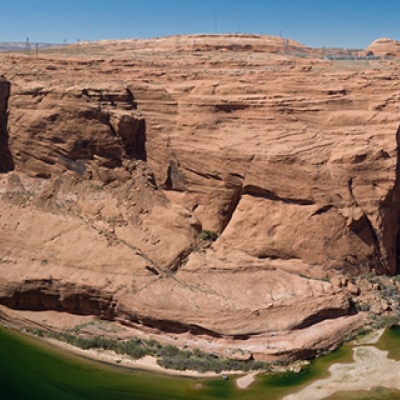


In the Case of Tar Sands Oil - Oils Well, Will Certainly Not End Well
By Dominick A. DellaSala / On August 30th, 2011
Canada’s growing interest in exporting some of the dirtiest crude oil in the world is a threat to not only North America’s wildlife but also a rational energy policy and a stable atmosphere. NASA and climate scientist James Hansen called this project a climate game-changer because burning Alberta “tar sands” oil could raise CO2 levels in the atmosphere by 200 parts per million (ppm), pushing us dangerously away from the 350 ppm safety net that he and other scientists have recommend (we are currently at 390 ppm of CO2 and rising at about 1-2 ppm per year).

Win-Win for Wind Energy and Wildlife Conservation
By David E. Naugle / On April 26th, 2011
Wind energy offers the potential to reduce carbon emissions while increasing energy independence and bolstering economic development. I am a huge proponent of harnessing wind to power our lives but this form of energy development has a larger land footprint per Gigawatt (GW) than most other forms of energy production, making appropriate siting and mitigation particularly important (Figure 1).

Nuclear Doomers Should Study Canada, Colorado: James S. Russell
By Admin / On March 25th, 2011
This is an excerpt of a Bloomberg article, "Nuclear Doomers Should Study Canada, Colorado: James S. Russell." James Russell, an Island Press author, recently wrote The Agile City.

Load Shedding or Load Sharing?
By R. Edward Grumbine / On September 28th, 2010
During a trip last week to Nepal to attend a workshop on climate change adaptation strategies across the Himalaya, I experienced darkness within darkness for several hours every night. I am not talking about visiting one of the poorest and least developed countries in the world, though poverty and political dysfunction are part of the darkness I mean to describe. The dim conditions I am referring to are both figurative and literal; each night Nepal undergoes “load shedding,” the governments preferred euphemism for what I have always known as a power outage.

The Spirits of the Dead Meet Big Hydropower
By R. Edward Grumbine / On September 7th, 2010
This is the next post in a year-long series written by Ed Grumbine, professor of environmental studies at Prescott College and author of Where the Dragon Meets the Angry River.
You don’t need hydroelectric dams, coal-fired power plants, or even solar-cells and wind farms to produce energy for some of the most important tasks that humans engage in. Honoring gods and spirits only requires a bit of paper money, small items of discarded clothing, incense, and a match.

On the Energy Front, State-censored Chinese Media Trumps U.S. Media
By R. Edward Grumbine / On August 30th, 2010
This post is the first in a year-long series by Ed Grumbine, professor of environmental studies at Prescott College and author of Where the Dragon Meets the Angry River.
Only five days into a one year stay in China, I’ve already noticed that the Chinese and U.S. media don’t report the news the same way. What amazed me is that Chinese state-run papers describe China’s economic growth and energy consumption more accurately than the U.S. press.

The U.S.-China three legged race
By R. Edward Grumbine / On August 25th, 2010
This post was excerpted a post written for Grist by Terry Tamminen is the former secretary of the California Environmental Protection Agency and is now a policy adviser and author. His latest book is Lives Per Gallon: The True Cost of our Oil Addiction.

Ending Oil Dependency with Green Chemistry
By Admin / On August 5th, 2010
Author Elizabeth Grossman writes on Huffington Post, "Can Green Chemistry Get Us Out of Deepwater?" where she challenges society's dependence on petrochemicals for manufactured goods and products.

The Renewable Energy City
By Peter Newman / On January 13th, 2009
The seven key innovations of resilient cities are set as city models, which will be detailed over the next several weeks here at "Eco-Compass." While no one city has shown innovation in all seven areas, some are quite advanced in one or two. The challenge for urban planners will be to apply all of these city characteristics together, to generate a sense of hope through a combination of new technology, city design and community-based innovation, which together will create the Resilient City.
The first is city model is the Renewable Energy City.

